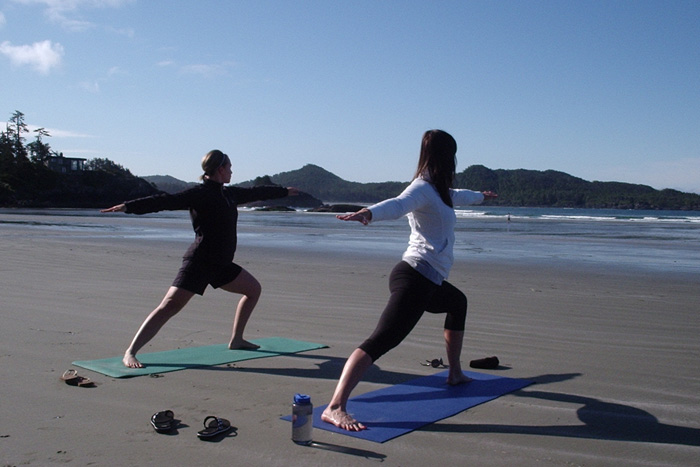 What it lacks in heat, this yoga session on the beach in Tofino makes up for in scenery.
I love trying new things, especially when it comes to food and fitness, so when I first heard about hot yoga I decided to give it a try. I hadn't done a lot of yoga before then, but I knew that I liked stretching and being really hot so combining the two sounded like something right up my alley. I liked it so much that I started going regularly, but the problem was my Type A any-stretch-you-can-do-I-can-do-better attitude, and after a short while I had myself a nasty hamstring injury.
What it lacks in heat, this yoga session on the beach in Tofino makes up for in scenery.
I love trying new things, especially when it comes to food and fitness, so when I first heard about hot yoga I decided to give it a try. I hadn't done a lot of yoga before then, but I knew that I liked stretching and being really hot so combining the two sounded like something right up my alley. I liked it so much that I started going regularly, but the problem was my Type A any-stretch-you-can-do-I-can-do-better attitude, and after a short while I had myself a nasty hamstring injury.
Fortunately I was working at a fitness club and sports medicine clinic at the time and I went to see my friend the chiropractor about my injury. At first I hadn’t put two and two together and couldn’t figure out how I’d hurt myself. My new yoga practice couldn’t be the culprit, I thought, because yoga was just stretching. It turned out that I wasn’t the first, or last, injured hot yogi to walk through his door. He explained to me that the extreme temperatures, sometimes over 40 degrees Celsius, cause the muscles to become very pliable and increase the risk of over-stretching. And over-stretch I did. Sadly, it took over a year for my hamstring to completely heal but I learned that lesson the hard way: listen to your body, give yourself a break when starting a new activity, and never, ever push through pain.
I’ve since been back to hot yoga and absolutely love the crazy-sweat-inducing heat, challenging poses and post-class glowy skin, but I'm very careful to honour my personal limits and opt out of any poses that are more than uncomfortable.
If you're thinking about trying hot yoga or are already doing so, check out this recent Globe and Mail article, Thinking of trying hot yoga? Read this first, which comments on hot yoga-related injuries and fainting spells, and gives tips on safely preparing for a class.